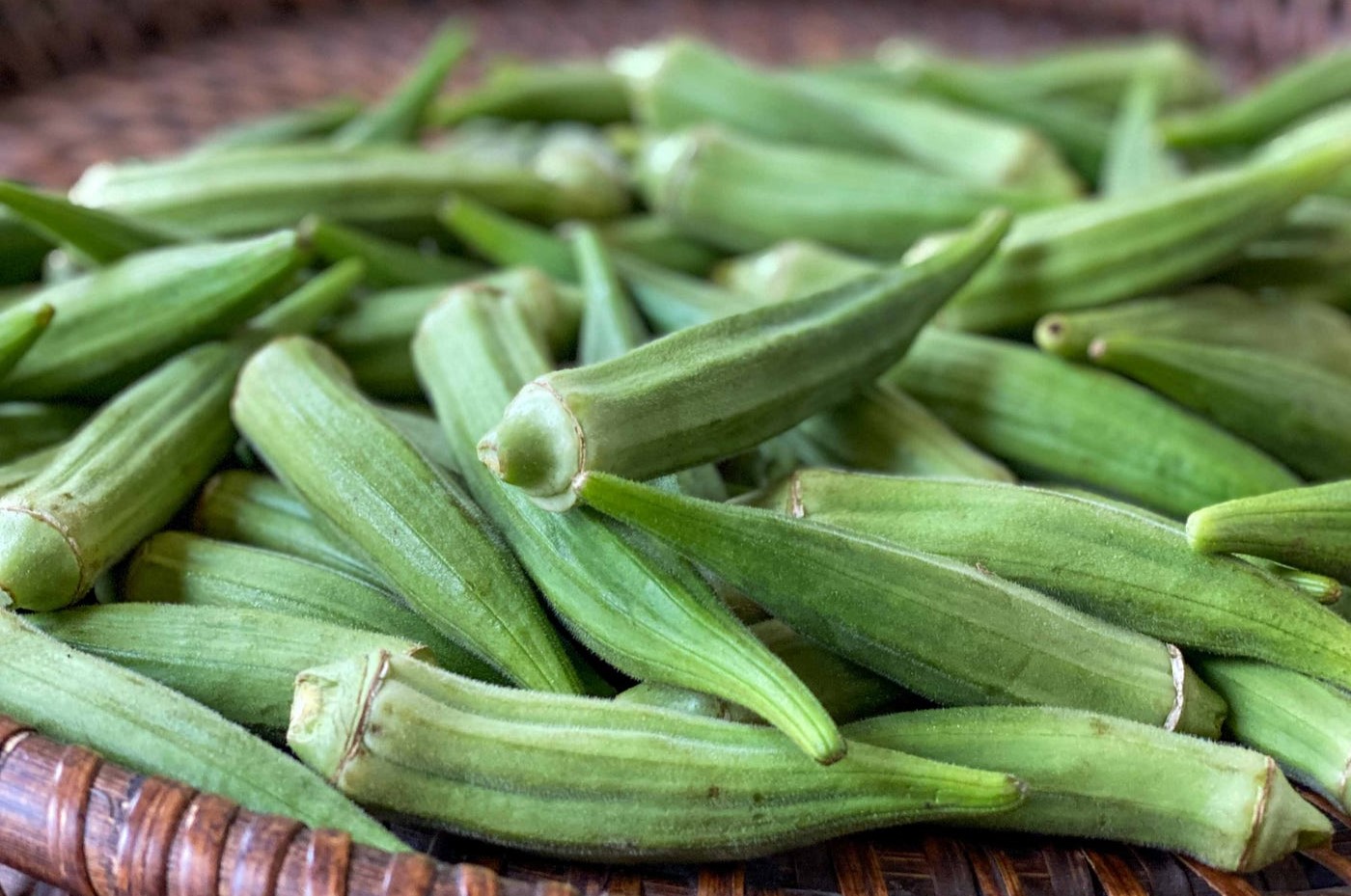
Okra, often called "lady's finger," is a unique vegetable with a rich history and numerous benefits. Originating from Africa, this green pod has made its way into kitchens worldwide. But what makes okra so special? It's packed with nutrients, including vitamins A, C, and K, as well as fiber and antioxidants. Whether you're a fan of gumbo or enjoy it fried, okra offers versatility in cooking. Did you know that okra can even help control blood sugar levels? From its slimy texture to its beautiful flowers, there's much to learn about this fascinating plant. Ready to dive into 30 intriguing facts about okra? Let's get started!
Key Takeaways:
- Okra, also known as "lady's finger," is a nutritious and versatile vegetable that can be used in a variety of dishes, from soups to stir-fries, and even as a coffee substitute.
- With its rich history and cultural significance, okra has some quirky and fun facts, such as its edible flowers and its use as a natural thickener in paper production. It's truly a fascinating and unique vegetable!
What is Okra?
Okra, also known as "lady's finger," is a green, finger-shaped vegetable popular in many cuisines. Its unique texture and flavor make it a favorite in dishes worldwide. Here are some fascinating facts about this versatile vegetable.
- Okra belongs to the mallow family, which includes hibiscus and cotton.
- The vegetable is native to Ethiopia and was cultivated by the ancient Egyptians.
- Okra is rich in vitamins A, C, and K, making it a nutritious addition to meals.
- It contains a high amount of dietary fiber, which aids digestion.
- The mucilage in okra can thicken soups and stews, a technique used in many Southern U.S. dishes.
Nutritional Benefits of Okra
Okra isn't just tasty; it's packed with nutrients that offer numerous health benefits. Let's dive into some of the nutritional perks of including okra in your diet.
- Okra is low in calories, making it a great option for weight management.
- It contains antioxidants like beta-carotene and lutein, which support eye health.
- The vegetable is a good source of folate, essential for pregnant women.
- Okra's high vitamin C content boosts the immune system.
- It also provides magnesium, which is crucial for muscle and nerve function.
Culinary Uses of Okra
Okra's versatility in the kitchen is one of its most appealing traits. From soups to stir-fries, this vegetable can be prepared in various ways.
- In the Southern United States, okra is often fried or used in gumbo.
- In Indian cuisine, it's commonly cooked with spices and served as a side dish.
- Okra can be pickled for a tangy, crunchy snack.
- It can be grilled or roasted for a smoky flavor.
- The seeds can be roasted and ground to make a coffee substitute.
Growing Okra
Interested in growing your own okra? It's relatively easy to cultivate, even for novice gardeners. Here are some tips and facts about growing this vegetable.
- Okra thrives in warm climates and needs full sunlight.
- It can be grown from seeds or transplants.
- The plant requires well-drained soil with a pH between 6.5 and 7.5.
- Okra plants can grow up to six feet tall.
- Harvesting usually begins about 50-60 days after planting.
Historical and Cultural Significance
Okra has a rich history and cultural significance in various parts of the world. Its journey from ancient times to modern kitchens is quite fascinating.
- The ancient Egyptians used okra seeds to make a coffee-like drink.
- It was brought to the Americas by enslaved Africans during the transatlantic slave trade.
- In Japan, okra is often served with soy sauce and bonito flakes.
- The vegetable is a staple in West African cuisine, often used in soups and stews.
- In Brazil, okra is a key ingredient in the traditional dish "caruru."
Fun and Unusual Facts About Okra
Okra has some quirky and lesser-known aspects that make it even more interesting. Here are a few fun facts to round out your knowledge.
- The mucilage in okra can be used as a natural thickener in paper production.
- Okra flowers are edible and can be used in salads.
- The vegetable is sometimes called "gumbo," which is derived from a West African word.
- Okra can be used to make a natural dye for fabrics.
- The plant's leaves can be cooked and eaten like spinach.
Okra: A Hidden Gem
Okra's more than just a vegetable. Packed with vitamins and minerals, it’s a powerhouse of nutrition. Its fiber content aids digestion and helps maintain blood sugar levels. Okra's antioxidants fight inflammation and support heart health. Plus, its low-calorie nature makes it a great addition to any diet.
Beyond health, okra's versatility in the kitchen is impressive. From gumbo to pickles, it adds a unique texture and flavor to dishes. Whether you’re a seasoned chef or a home cook, experimenting with okra can elevate your meals.
So next time you’re at the grocery store, grab some okra. Your body and taste buds will thank you. This often-overlooked veggie deserves a spot on your plate. Give it a try and enjoy the benefits it brings to your health and culinary adventures.
Frequently Asked Questions
Was this page helpful?
Our commitment to delivering trustworthy and engaging content is at the heart of what we do. Each fact on our site is contributed by real users like you, bringing a wealth of diverse insights and information. To ensure the highest standards of accuracy and reliability, our dedicated editors meticulously review each submission. This process guarantees that the facts we share are not only fascinating but also credible. Trust in our commitment to quality and authenticity as you explore and learn with us.


